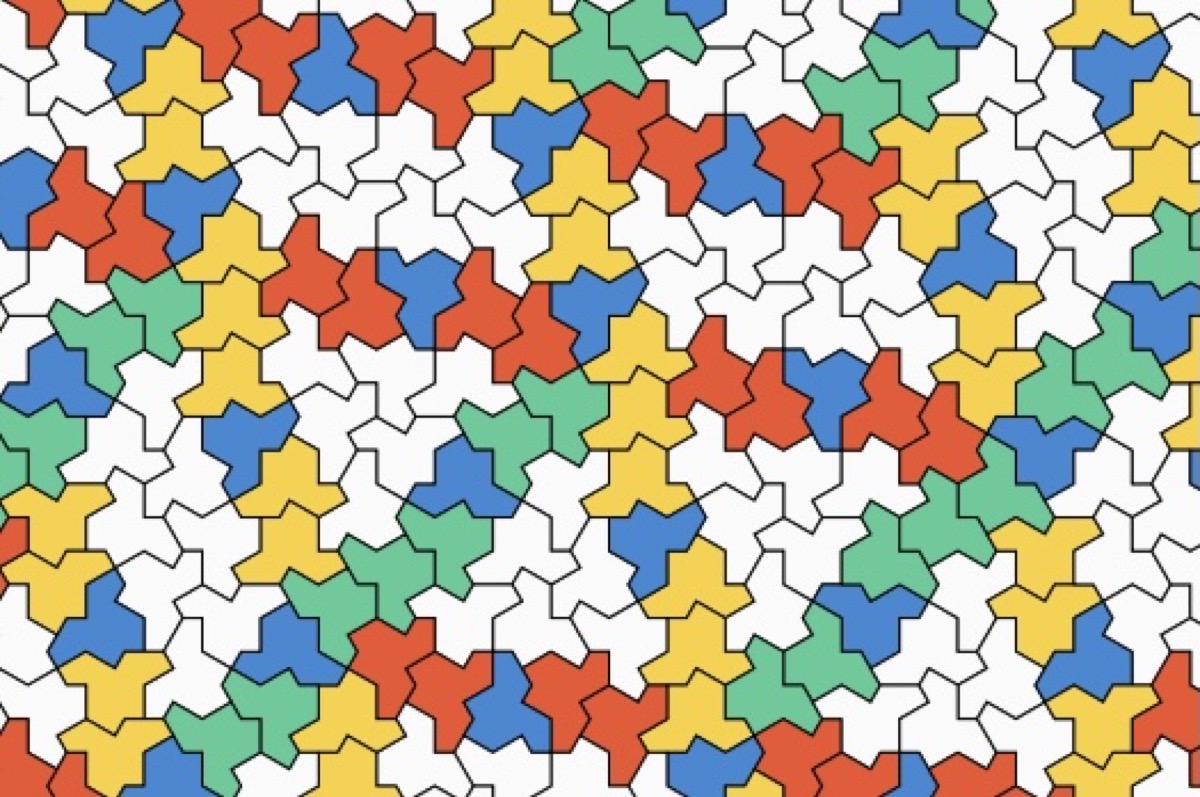Hobbyist Discovers New ‘Einstein Shape’ To Solve Mathematical Puzzle

A new shape just dropped. Is it a six-sided anime love triangle? Is it the downward spiral of U.K. politics? Not quite! This cool new shape is called “the hat,” and it looks sorta like the Sorting Hat had one too many butter beers? Alcoholism isn’t exactly cool, and tbh neither is Harry Potter anymore. So what’s all the hubbub about this weird little drunk bathroom floor tile hat thingy?
Well, the special thing about “the hat” is not the shape of it, but the pattern it makes … or rather doesn’t make.
We’ve all been there. You eat a little bit too much Chipotle and suddenly spend the next half an hour on the toilet. Your phone died, so all you can do is stare at the little tiles on your bathroom floor. Oh lookit the patterns they make! A hexagon! Another hexagon! Spoiler alert: more hexagons! Your floor starts looking like a weird little chessboard whose rules would baffle even Beth Harmon from The Queen’s Gambit.
But there is a method to the madness. The shapes are arranged mathematically to repeat themselves. Even the most complex of shapes would repeat itself if your bathroom floor was infinite. But what if there were a shape that would NEVER repeat itself no matter how many times it is printed on your tiles? Bet you’d have WAY more fun looking at your floor in times of gastrointestinal crisis, amiright?
A shape like this is called an aperiodic monotile, also known as an “einstien shape”—conveniently invoking a certain well-known theoretical physicist. Now, the thing about these aperiodic monotiles is that while they’ve been found in the past, they’re usually really big. The more complicated they are, the less likely they are to repeat themselves. The first ever set of aperiodic shapes was dreamed up by some nerds over 60 years ago, and that particular shape set contained 20,000 shapes, according to The Guardian. That’s entirely too many shapes. Since then, scientists have tried to make that number smaller and smaller. Eventually, a Nobel Prize-winning turbo-nerd named Roger Penrose made a a breakthrough in the 1970s, but that was the last big news in the Shape Hunt.
Now, David Smith of the East Riding of Yorkshire has picked up the trail by discovering the new 13-sided “hat”! So how’d he do it? Did he have a big fancy computer? A team of unpaid interns? 1,000 monkeys drawing shapes on a thousand sheets of paper for a thousand years? No. He simply hopped on this online geometry platform and would scour the internet for shapes like you do for porn. When he found a shape that caught his eye, he would cut it out on cardstock and arrange it into patterns to see if it would repeat. And yes, he did this all by himself.
Once he had found “the hat,” he reached out to Dr. Craig Kaplan, an associate professor of computer science at the University of Waterloo in Canada, possibly by email with the subject line reading “found a cool hat lol ;).” The pair then worked together to confirm if the shape was indeed an “einstein shape,” or just a fashionable phony. As Kaplan told The Guardian, they got about “halfway through the problem” before enlisting the help of Cambridge software developer Dr. Joseph Myers and Dr. Chaim Goodman-Strauss, a mathematician from the University of Arkansas.
The Fab Four were then able to come up with a proof that the shape was indeed an aperiodic monotile. Dr. Myers later came up with a second proof that was apparently much more “esoteric” and followed a “new line of attack” that the researchers hadn’t seen before. This weird-ass proof came on the heels of an even cooler discovery! Smith was able to discover another einstein shape that looked like a turtle! So cute! This discovery allowed the team to uncover a whole family of aperiodic monotiles! And I sincerely hope that one of them looks like a turtle wearing the hat.
While the boys have just recently published a paper on their findings, the practical applications of “the hat” and other such shapes are yet uncertain. Smith believes that shapes like these will aid in the study of quasicrystals. What are quasicrystals? I have no idea. I took one look at the Wikipedia page and my brain short circuited. I’m just glad there’s someone in this world who can understand and appreciate the beauty of complex mathematics. Regrettably, I’m not one of them.
(featured image: David Smith, Joseph Samuel Myers, Craig S. Kaplan, and Chaim Goodman-Strauss)
Have a tip we should know? [email protected]
